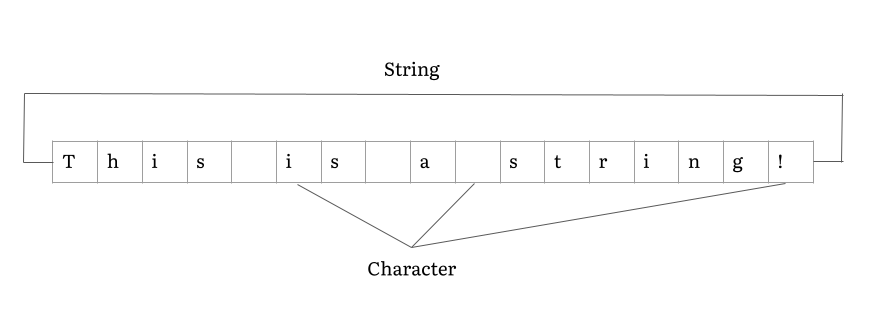|
Knuth–Morris–Pratt Algorithm
In computer science, the Knuth–Morris–Pratt string-searching algorithm (or KMP algorithm) searches for occurrences of a "word" W within a main "text string" S by employing the observation that when a mismatch occurs, the word itself embodies sufficient information to determine where the next match could begin, thus bypassing re-examination of previously matched characters. The algorithm was conceived by James H. Morris and independently discovered by Donald Knuth "a few weeks later" from automata theory. Morris and Vaughan Pratt published a technical report in 1970. The three also published the algorithm jointly in 1977. Independently, in 1969, Matiyasevich discovered a similar algorithm, coded by a two-dimensional Turing machine, while studying a string-pattern-matching recognition problem over a binary alphabet. This was the first linear-time algorithm for string matching. Background A string-matching algorithm wants to find the starting index m in string S[] that match ... [...More Info...] [...Related Items...] OR: [Wikipedia] [Google] [Baidu] |
|
 |
String (computer Science)
In computer programming, a string is traditionally a sequence of characters, either as a literal constant or as some kind of variable. The latter may allow its elements to be mutated and the length changed, or it may be fixed (after creation). A string is generally considered as a data type and is often implemented as an array data structure of bytes (or words) that stores a sequence of elements, typically characters, using some character encoding. ''String'' may also denote more general arrays or other sequence (or list) data types and structures. Depending on the programming language and precise data type used, a variable declared to be a string may either cause storage in memory to be statically allocated for a predetermined maximum length or employ dynamic allocation to allow it to hold a variable number of elements. When a string appears literally in source code, it is known as a string literal or an anonymous string. In formal languages, which are used in mathemati ... [...More Info...] [...Related Items...] OR: [Wikipedia] [Google] [Baidu] |
|
Computational Complexity Theory
In theoretical computer science and mathematics, computational complexity theory focuses on classifying computational problems according to their resource usage, and relating these classes to each other. A computational problem is a task solved by a computer. A computation problem is solvable by mechanical application of mathematical steps, such as an algorithm. A problem is regarded as inherently difficult if its solution requires significant resources, whatever the algorithm used. The theory formalizes this intuition, by introducing mathematical models of computation to study these problems and quantifying their computational complexity, i.e., the amount of resources needed to solve them, such as time and storage. Other measures of complexity are also used, such as the amount of communication (used in communication complexity), the number of gates in a circuit (used in circuit complexity) and the number of processors (used in parallel computing). One of the roles of compu ... [...More Info...] [...Related Items...] OR: [Wikipedia] [Google] [Baidu] |
|
|
String Matching Algorithms
In computer science, string-searching algorithms, sometimes called string-matching algorithms, are an important class of string algorithms that try to find a place where one or several strings (also called patterns) are found within a larger string or text. A basic example of string searching is when the pattern and the searched text are arrays of elements of an alphabet (finite set) Σ. Σ may be a human language alphabet, for example, the letters ''A'' through ''Z'' and other applications may use a ''binary alphabet'' (Σ = ) or a ''DNA alphabet'' (Σ = ) in bioinformatics. In practice, the method of feasible string-search algorithm may be affected by the string encoding. In particular, if a variable-width encoding is in use, then it may be slower to find the ''N''th character, perhaps requiring time proportional to ''N''. This may significantly slow some search algorithms. One of many possible solutions is to search for the sequence of code units instead, but doing so may pro ... [...More Info...] [...Related Items...] OR: [Wikipedia] [Google] [Baidu] |
|
|
David Eppstein
David Arthur Eppstein (born 1963) is an American computer scientist and mathematician. He is a Distinguished Professor of computer science at the University of California, Irvine. He is known for his work in computational geometry, graph algorithms, and recreational mathematics. In 2011, he was named an ACM Fellow. Biography Born in Windsor, England, in 1963, Eppstein received a B.S. in Mathematics from Stanford University in 1984, and later an M.S. (1985) and Ph.D. (1989) in computer science from Columbia University, after which he took a postdoctoral position at Xerox's Palo Alto Research Center. He joined the UC Irvine faculty in 1990, and was co-chair of the Computer Science Department there from 2002 to 2005. In 2014, he was named a Chancellor's Professor. In October 2017, Eppstein was one of 396 members elected as fellows of the American Association for the Advancement of Science. Eppstein is also an amateur digital photographer. Research interests In compute ... [...More Info...] [...Related Items...] OR: [Wikipedia] [Google] [Baidu] |
|
|
Lexicographically Minimal String Rotation
In computer science, the lexicographically minimal string rotation or lexicographically least circular substring is the problem of finding the rotation of a string possessing the lowest lexicographical order of all such rotations. For example, the lexicographically minimal rotation of "bbaaccaadd" would be "aaccaaddbb". It is possible for a string to have multiple lexicographically minimal rotations, but for most applications this does not matter as the rotations must be equivalent. Finding the lexicographically minimal rotation is useful as a way of normalizing strings. If the strings represent potentially isomorphic structures such as graphs, normalizing in this way allows for simple equality checking. A common implementation trick when dealing with circular strings is to concatenate the string to itself instead of having to perform modular arithmetic on the string indices. Algorithms The Naive Algorithm The naive algorithm for finding the lexicographically minimal rotation of ... [...More Info...] [...Related Items...] OR: [Wikipedia] [Google] [Baidu] |
|